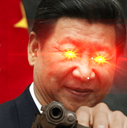On April 30, 2015, Senator Bernie Sanders, with little to no fanfare and less than 10 media outlets in attendance, announced his intention to seek the presidential nomination of the Democrat Party… what followed certainly took the nation and the Democrat Party by surprise as his candidacy emerged into an undeniable force that jockeyed the Democratic National Committee (DNC) and their preferred candidate, Hillary Clinton, so much that the party resorted to malfeasance and corruption so blatant it forced them to quarantine then DNC chairwoman , Debbie Wasserman Shultz, during the 2016 convention in Philadelphia.
What’s followed since 2016 are hard truths about Sanders and his true intentions as nothing more than a DNC agent of controlled opposition.
There’s a major contradiction between claiming (1) that Bernie was an “undeniable force” that Democrats had to job to defeat, and (2) claiming he’s controlled opposition. People pick up on this, and it makes the “controlled opposition” theory sound even more conspiratorial. Saying Bernie functions as controlled opposition (“the purpose of a system is what it does”) isn’t much better, as the central claim – that Bernie is controlled by the Democratic Party – has a whole bunch of direct evidence against it and very little in support.
This is not a defense of Bernie; he’s well short of what is needed today. But it’s important to find out the best way to talk about him because of his historical role in shaping today’s American left, and his current ability to draw large left-ish crowds.
Bernie – like most people – has certain lines he won’t cross in order to win. One of his worst lines is his general support for U.S. foreign policy (including support of Israel), and he is also unwilling to risk splitting the Democratic Party. Within those lines he is (and was) actually trying to win. This is the way to talk about him. It’s accurate (unlike “controlled opposition”) and highlights that the lines a successful leftist politician will have to confront.


